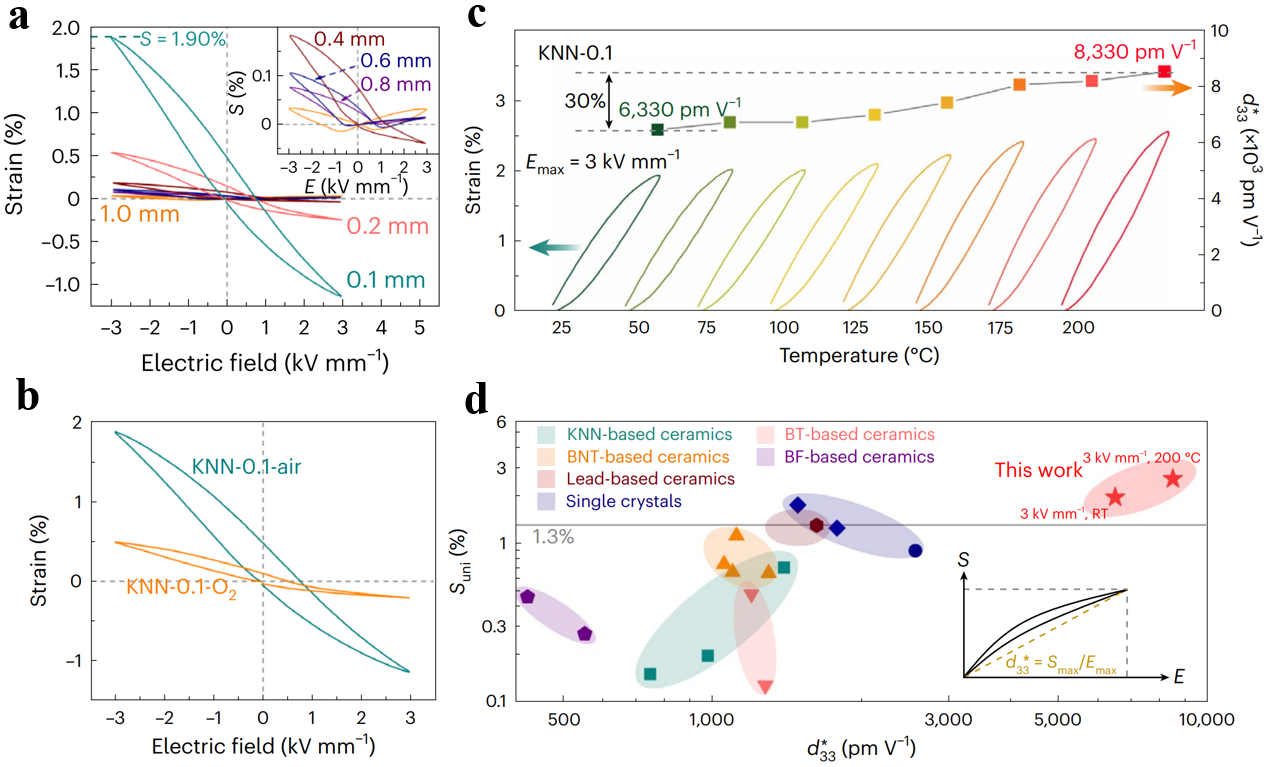
Taking advantage of the electron spin resonance (ESR) spectrometer at the Steady High Magnetic Field Experimental Facility (SHMFF), researchers from Tsinghua University, in collaboration with Beijing Institute of Technology, the University of Wollongong (Australia), and the Hefei Institutes of Physical Science of the Chinese Academy of Sciences, have achieved ultrahigh piezoelectric strain of 1.9% in (K,Na)NbO3 (KNN) lead-free piezoelectric ceramics.
The findings were published in Nature Materials.
Piezoelectric actuators dominate the global market due to rapid response and precision, where performance hinges on the electrostrain figure of merit. While conventional piezoceramics exhibit sub-1% electrostrain, defect-engineered KNN ceramics achieved 1.04% at room temperature in 2022, sparking intense research on lead-free systems. Recent asymmetric electrostrain responses have pushed records higher, driving mechanistic studies to decode their origins.
In this study, the research team investigated hot-pressing sintered and annealed KNN ceramics, demonstrating a unique thickness-dependent electrostrain response and achieving an ultrahigh electrostrain of 1.9% (with an effective piezoelectric coefficient exceeding 6300 pm/V under room temperature, 3 kV/mm, and 1 Hz conditions).
The team leveraged multiple in situ characterization techniques and ESR to elucidate the origin of high electrostrain in KNN-based ceramics, revealing that heterogeneously distributed oxygen vacancies under electric fields induce substantial volume variations in surface unit cells, thereby driving the enhanced electrostrain.
To explain this phenomenon, the team introduced the concept of the "chemopiezoelectric effect", describing how electrostrain emerges from the complex interplay of piezoelectric effects, ferroelectric domain switching, electrostriction, and short-range oxygen vacancy migration. This new theoretical framework could drive the development of next-generation high-performance piezoelectric actuators.
Furthermore, the KNN piezoceramic demonstrates exceptional frequency/temperature stability and fatigue resistance, showcasing potential for application in multilayer piezoelectric actuators via laminated stacking technology.
These findings provide critical guidance for advancing research in smart materials, flexible electronics, and micro/nano-actuation systems.

Ultrahigh electrostrain in KNN ceramics (Image by CHEN Feng)